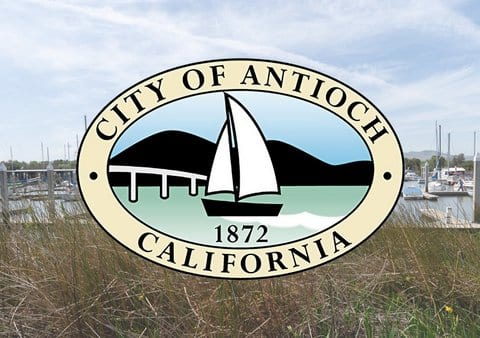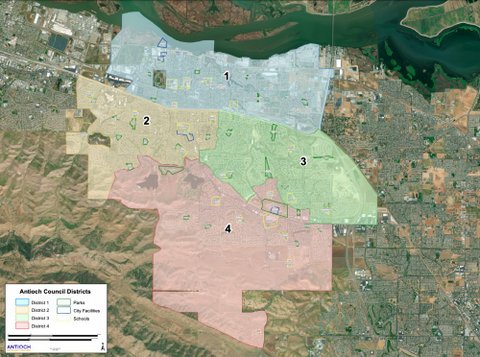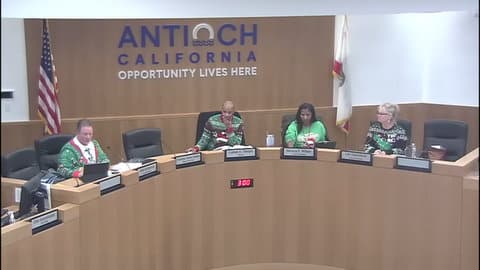
18 Dec Antioch City Council Approves Environmental Justice Element Update

(Image courtesy of city of Antioch via Bay City News)
By Aly Brown
Bay City News
The Antioch City Council voted 4-0, with Mayor Pro Tem Tamisha Torres-Walker absent, on Tuesday to amend the city’s General Plan to include an Environmental Justice Element as required by the state.
Antioch’s Environmental Justice Element outlines six goals, which aim to encourage meaningful civic engagement; improve environmental conditions; improve access to public facilities; improve access to healthy food; provide fair, safe and healthy housing; and improve mobility and transit options.
“Environmental justice” refers to the “fair treatment and meaningful participation of people of all races, cultures and incomes with respect to the development, adoption, implementation and enforcement of environmental laws, regulations and policies.”
Under California Senate Bill 1000, cities must address environmental justice in disadvantaged communities within the areas covered by their General Plans. Disadvantaged communities are those disproportionately impacted by pollution or other hazards that can lead to negative health effects and include concentration of lower-income individuals. Census tracts throughout the city were evaluated based on environmental factors and income.
>>Read: Richmond’s Most Vulnerable Can’t Escape Dangerous Air
As such, five census tracts in Antioch were identified as environmental justice neighborhoods, primarily located in the northwestern portion of the city from the riverfront area to state Highway 4.
“Once the relevant (environmental justice) neighborhoods in the city were identified, community engagement efforts began and sought to prioritize public and stakeholder feedback,” said Curtis Banks with Urban Planning Partners, the consultant hired by the city to complete the Environmental Justice Element in compliance with the state.
Stakeholders included the First 5 Contra Costa and Contra Costa Health, which provided guidance on community needs, such as access to food for lower-income populations, and ways to improve the environment for improved health. Among other risks, CCH highlighted that residents living near Highway 4 are exposed to inhalable particles from vehicular pollution, while also noting that communities fishing in the river are more susceptible to mercury contamination.
During public comment, one person spoke on the topic. Expressing anger and frustration with the city, Andrew Becker said that disparities in Antioch spread beyond the ones faced by residents of the five census tracts indicated in the Environmental Justice Element.
He said 17 of the 20 tracts in Antioch fall under the 80% area median income, which is considered lower income according to the Department of Housing and Community Development. He wanted to know why the city hadn’t applied for various state and federal grants to gain assistance with affordable housing development, transit and environmental remediation.
“If we know that 17 out of 20 tracts in Antioch are under 80% (AMI), why were the last 10 developments for multi-families over 80% (AMI)?” Becker said.
“At our last Planning Commission meeting, a developer came in and took 71 single-family lots and put ADUs on them — 140-something lots that are going to be rentals across the board — and respectfully, our staff said that’s a creative way to get around the density restrictions that our General Plan allows so we can bring in more of that 80% over-market housing,” he said.
Copyright © 2023 Bay City News, Inc. All rights reserved. Republication, rebroadcast or redistribution without the express written consent of Bay City News, Inc. is prohibited. Bay City News is a 24/7 news service covering the greater Bay Area.






No Comments